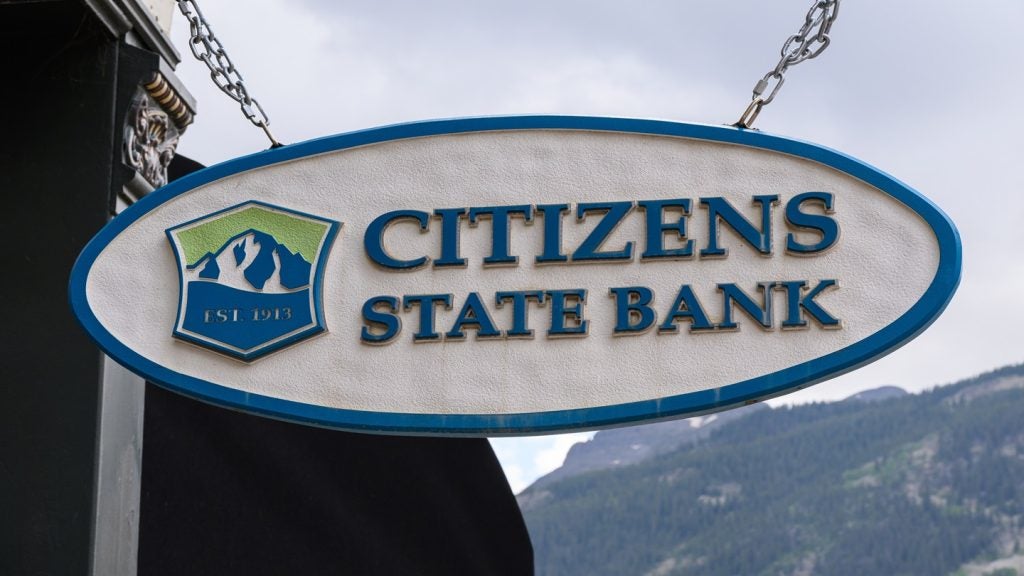With collectively, €630
billion in loans, €750 billion in deposits, 50
million customers, 100 million accounts and around 16,000
branches, Germany’s Sparkassen have weathered the
financial crisis intact. In fact, as Thomas Keidel at the German
Savings Bank Association tells Hugh Fasken, they have become even more
important.
Germany’s savings banks – the Sparkassen – came under
intense discussion in the run up to the global financial crisis in
2007.
As the dominant retail banking entity in
Germany with, collectively, a 40 percent market share and €750
billion ($1.13 trillion) in deposits, the 438 publicly-owned
savings banks were labelled as fiercely uncompetitive and a huge
block to commercial domestic and foreign banks looking to expand in
Europe’s richest and largest economy.
Two years on, and the view is polar opposite.
In the wake of the crisis, the Sparkassen are being held
up as shining examples of how to run a low-risk, safe and stable
banking industry.
“The debate about Germany’s Three Pillars
system [the split between commercial banks such as Deutsche Bank;
public institutions, including savings banks; and co-operative
banks] is now completely dead,” says Thomas Keidel, head of
financial market relations at the Deutscher Sparkassen und
Giroverband (DSGV), the German Savings Banks Association.


US Tariffs are shifting - will you react or anticipate?
Don’t let policy changes catch you off guard. Stay proactive with real-time data and expert analysis.
By GlobalDataThe DSGV is the umbrella organisation of the
Sparkassen-Finanzgruppe, the Savings Banks Finance Group,
an association which also includes the powerful Landesbanken
(state-owned wholesale banks) and Landesbausparkassen (building
societies).
In total, the three entities – the Sparkassen,
Landesbanken and Landesbausparkassen – have around €3 trillion in
assets between them, making them the world’s largest banking entity
if taken as a whole.
At the end of 2008, a total of 620
institutions with roughly 377,000 employees belonged to the
group.
“Everyone now knows that without the
Sparkassen and the Three Pillars system, Germany would have
struggled much like the UK, Spain and other key economies. The
low-risk, straightforward model has proved to be resilient and
resolute in sharp contrast to the commercial banking sector,”
Keidel says.
For fiscal 2008, the Sparkassen posted a net
income of €1.17 billion, down 46.4 percent on fiscal 2007. But this
result, albeit down year-on-year, was a sharp outperformance
compared to the rest of the German industry.

All the Landesbanken, in contrast, posted an
annual loss of €6.52 billion. In terms of the commercial banking
market, things were even worse.
Deutsche Bank’s €6.22 billion loss in the
fourth quarter of 2008 alone was the stand-out bad performance of
the year, though Dresdner Bank’s full-year loss of €4.7 billion and
Deutsche Postbank’s near billion-euro annual loss were also poor –
and an indication of just how badly Germany’s banking industry
suffered during the financial crisis.
Flight to safety
Each ‘pillar’ of the German banking
market has its own protection scheme, and for the savings banks
this comes in the form of the Joint Liability Scheme.
In effect, each savings bank
guarantees and supports the others: if one gets in trouble, then
customer liabilities and deposits are shouldered by the rest.
The result?
“Stability and trust,” said Keidel.
During the crisis, Keidel said, the savings
banks have grown market share in retail and SME banking as
customers have “flocked” to the “trusted and safe” savings banks.
Retail lending has grown nearly 10 percent, for instance.
In an indication of the low-risk, conservative
nature of their business, loan-to-value rates for mortgages, for
instance, never go beyond 60 to 70 percent, said Keidel, in
contrast to the 90, 100 and even 125 percent mortgages offered in
the UK or the US.
“Mortgage customers need 30 percent equity.
Also, rates are fixed so a customer knows exactly what they have to
pay back. A few years ago, everyone was laughing at us and these
sorts of rules. Now they are state-of-the-art and modern.”
In fiscal 2008, deposits from households
(excluding term deposits for a period of two years or more)
increased by 6.7 percent to €1.43 trillion, a year in which the
savings banks achieved the highest growth since 2001 for retail
deposits.
In total, the 438 savings banks have a
combined market share of 40.3 percent in deposits and 38.5 percent
of lending.
In some segments, they are even more dominant:
in the German savings bonds market, the Sparkassen have a 65
percent market share.

While the savings banks’ current account has
long been key factor in promoting customer loyalty, the banks’
credit card offering is also assuming this role to an increasing
extent. By 2007, one in every two credit cards in German was
marketed by a savings bank, with the banks’ marketing project with
MasterCard during soccer’s 2006 FIFA World Cup finals in Germany,
credited with boosting market share.
A single IT platform
Keidel says that technology
consolidation among the savings banks has now been completed, with
the 438 separate institutions and all 16,000 branches now on one
single IT platform – there were 11 at one point, making
inter-operability near impossible – meaning that a customer of one
Sparkassen can take money out of the ATMs of another, view
statements and carry out transaction banking across the
network.
“This adds convenience into the proposition,”
said Keidel, though he added that the majority of Sparkassen
customers tend to reside little more than a few kilometres away
from their local branch.
Despite their solid place in the German
economy, the savings banks are looking at efficiencies and cost
reductions.
The number of individual institutions has
fallen from 857 in 1968 to 770 in 1992, 562 in 2001 and 438
currently. Keidel says this will probably drop further in 2010 but
he does not envisage a huge decrease over the longer term.
“The strategy is undoubtedly to focus on cost
reduction. The savings banks need to generate earnings, to see a
rise in equity, and every kind of cost is being analysed at the
moment,” he states, emphatically adding that ‘cost reduction’ will
not mean redundancies in branch staff.

“No, we are looking at items such as payment
transaction costs. Given the sheer volume of payments, if we can
reduce [costs] by 1 percent, there are significant economies of
scale that can be achieved,” he explains.
In much the same way, migrating customers to
cheaper electronic banking channels is another key strategy, states
Keidel, despite the value placed on branches and face-to-face
customer service.
All Sparkassen are on the same internet and
mobile banking platforms – which means costs are shared – though
apart from some of the larger Sparkassen, telephone banking
enquires are usually dealt with at the branch. As a result of
efficiency gains, the savings banks’ cost-income ratio of 73.4
percent in fiscal 2008 is targeted to drop below 60 percent in the
medium term.
The iPhone bandwagon
The banks have even jumped on the
iPhone bandwagon (see RBI 616),
providing a multifunctional m-banking service with a choice of
three different programmes:
• A free branch location device;
• A free statements and account
information service; and
• A paid-for transactional programme
which allows fund transfers and other interactive services.
Interestingly, the Sparkassen do charge what
Keidel refers to as “premium” prices for their services, and these
account charges are unlikely to disappear or be dropped.
He does say, however, that the commercial and
foreign banks which have come into the market have generally under
cut these charges but have been unable to gain market share quickly
enough to meet earnings targets.
The importance of the country’s savings banks
to the German economic – and social – system can not be
underestimated, Keidel reaffirms.
They employ 251,400 people, excluding 18,000
trainees, and form an integral part of their local communities
(much like the cajas in Spain).
The Sparkassen are Germany’s largest sponsors
of cultural and social activities, spending €450 million alone in
2008 on such activities.
At the end of 2008, 679 foundations of the
Savings Banks Finance Group were active in sponsoring such
projects. Since 2003, the number of foundations has increased by
more than 100. In 2008, endowment capital amounted to approximately
€1.8 billion, €240 million more than in the previous year.
“[This] safety is part of the culture [in
Germany]. With 16,000 branches, they are very close to customers
and to local businesses. If [the businesses] suffer, the banks
suffer, so the level of communication and service is very high,”
Keidel concludes.
|
PERFORMANCE |
|||
|
German savings banks – business |
|||
|
FY2008 |
FY2007 |
% change |
|
|
Net interest income (€bn) |
33.97 |
32.77 |
3.6 |
|
Net commission income (€bn) |
8.19 |
8.29 |
-1.3 |
|
Earnings before valuation (€bn) |
14.12 |
13.41 |
5.3 |
|
Taxes on income (€bn) |
1.79 |
1.95 |
-8.4 |
|
Net income after tax (€bn) |
-5.21 |
2.73 |
n/m |
|
of which net income of Savings Banks after |
1.17 |
2.18 |
-46.4 |
|
of which net income of Landesbanken after |
-6.52 |
0.51 |
n/m |
|
of which net income of Landesbausparkassen |
0.14 |
0.04 |
238.1 |
|
n/m = not meaningful Source: DSGV |
|||







